In booming Koreatown, these immigrants live fizzled American dreams
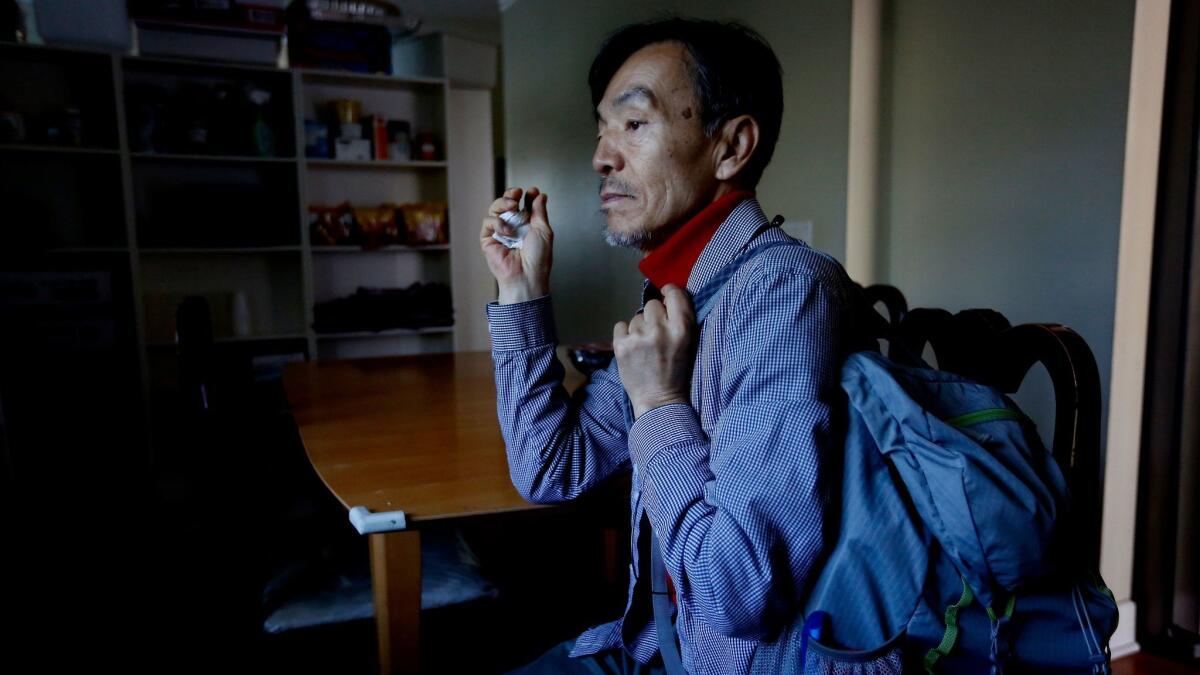
- Share via
When he hears his phone ring, Seon Jin Kim’s whole body flinches and his ears perk up.
A 62-year-old diabetic with diminishing eyesight, he bounds up the stairs and dives for the phone. This could be the minimum-wage job at a Koreatown pool hall he interviewed for a couple of days ago, the call that would get him back on his feet.
But it’s a wrong number. The phone rings again a few minutes later and he flies up the steps once more — another wrong number.
He couldn’t tell you where things went wrong, but after more than a decade of paint jobs, construction work and cleaning toilets, he had landed in this unofficial shelter for Koreans, run by an Episcopal priest.
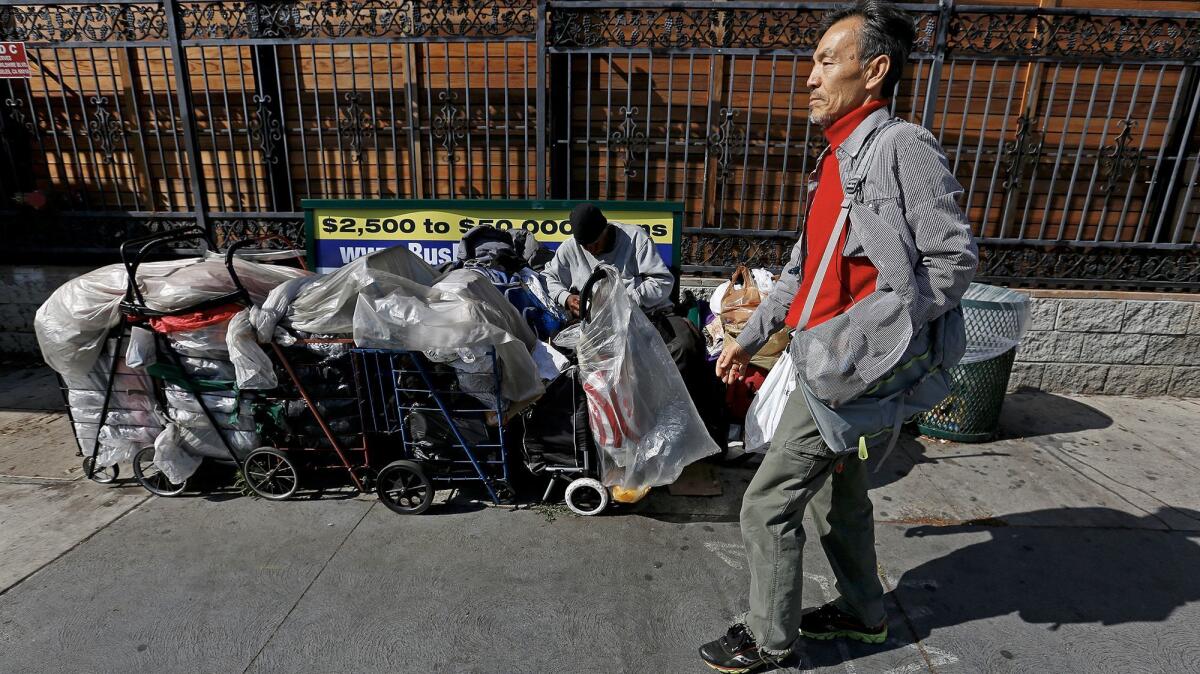
For Korean immigrants in Los Angeles, Koreatown, with luxury condos, ever-crowded restaurants and a nightlife that draws the young and trendy from every part of the city, represents an ideal of prosperity and high achievement.
But decades after immigrating, few of the bus boys, cashiers, drivers, cooks and unskilled construction workers who helped build K-town embody the sort of success stories Forbes magazine once called “Bankers, Grocers and Lots of Kims.”
Often unable to speak English and lacking career skills or legal work visas, they are part of what researchers have called a “pliant, low-wage immigrant workforce,” that remains stuck in low-paying jobs nationwide.
In Koreatown, some of those workers’ stories end at a home residents call Adullam, after the Old Testament cave in which David took refuge.
There’s the man who once worked 18-hour days driving illegal cabs to support a daughter with cerebral palsy.
A mother who has worked for decades in hair salons paying off a husband’s gambling debts while raising a deaf and mute son.
A man who started one business after another, peddling clothing and perfume, until it all came crumbling down.
David left the biblical Adullam and went on to become king of Israel.
Some of the dozens of impoverished Koreans who have stayed at Koreatown’s Adullam since it opened in 2009 have moved on to jobs as supermarket cashiers or box packers. But seven have died here and others don’t see themselves leaving any other way.
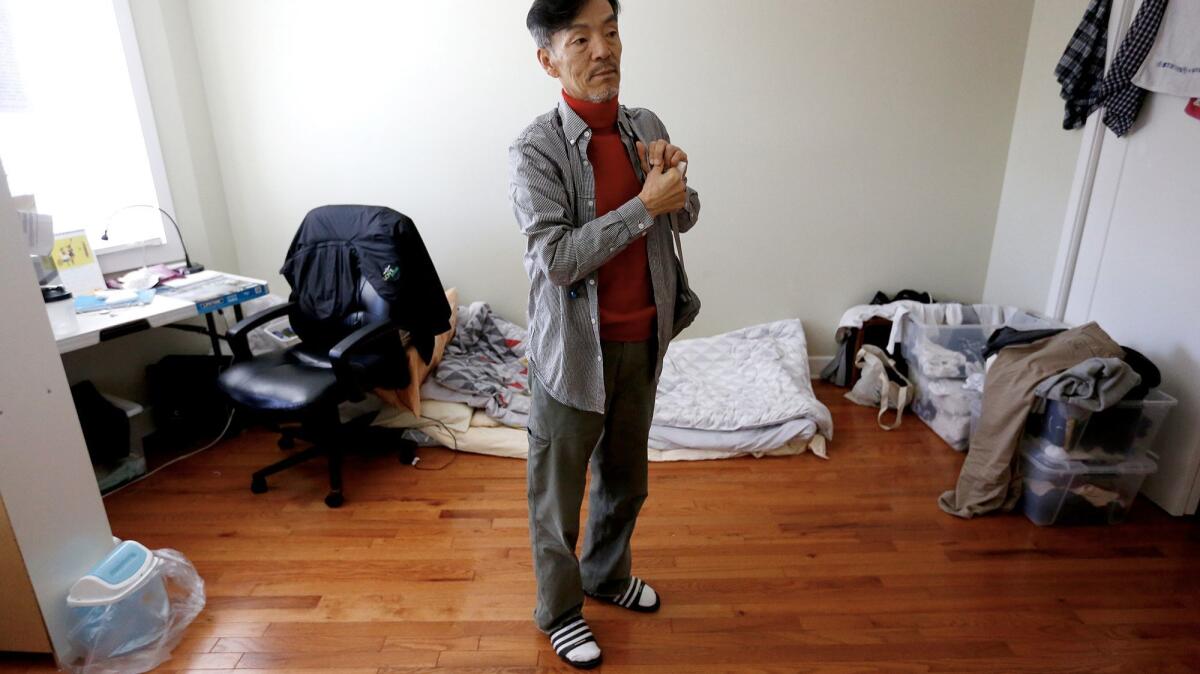
The ‘enclave economy’
In 1980, a sociologist studying Cubans in Miami theorized that a self-contained economy in which Cuban-owned businesses employed other Cubans, offered a jump-start for newly arriving immigrants.
Since then, though, other researchers have found that these “enclave economies” might be more of an impediment: the ethnic clusters that are launchpads for some, can be a lifelong trap for others, leaving them vulnerable to exploitation by employers and stuck in dead-end jobs with low pay.
In Asian American enclaves, where stories of successful immigrants predominate, policymakers, social service providers and even fellow immigrants often overlook workers permanently stuck on the lower rungs, activists and academics say.

Unemployment grew nearly 200% among Asian Americans in California between 2005 and 2010, higher than for any other racial group, and in recent years Asians have become the fastest-growing segment of people in the country without legal documentation.
Anna Joo Kim, a Georgia Tech professor who has researched Koreatown, said that while social networks offer new and low-skilled immigrants opportunities they might not otherwise have, those networks often leave them trapped working in restaurants, personal services, hair salons, nail salons, massage parlors and other jobs with few prospects for advancement.
Looking beyond the success
The Rev. John Kim had been a priest at St. James Episcopal Church in Koreatown for seven years when he was startled to see a Korean man in line at the church’s weekly soup kitchen.
When he first arrived in Koreatown, he had tried to help the throngs of Latino day laborers milling about Seoul International Park.
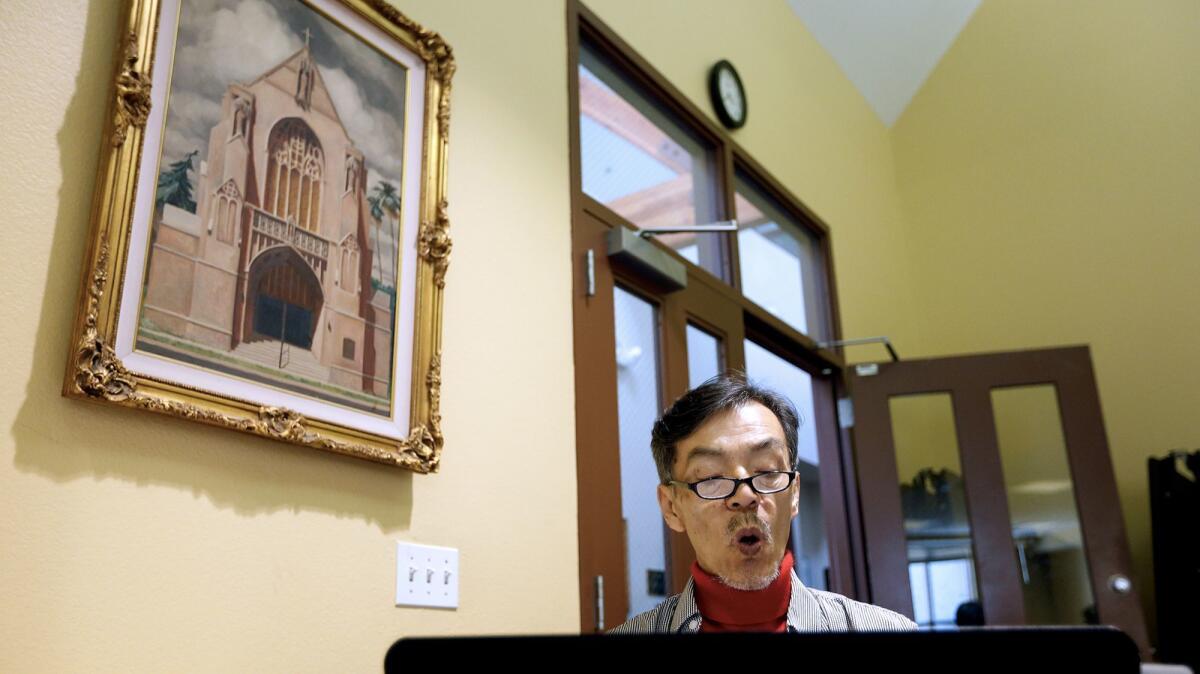
The workers from Mexico, El Salvador and Honduras showed up every morning waiting for jobs, and he’d open the trunk of his car and hand out hot coffee, cup noodles and T-shirts with the slogan: “I’m a good worker. Jesus is a good shepherd.”
In those days, most of the Korean Americans he saw appeared wealthy; rarely had he seen anyone who appeared to be struggling.
That lone Korean man he met in 2009 said he’d ended up on the streets after his business went under; he was contemplating suicide. The shelters weren’t for him, he said — he couldn’t communicate with anyone, and felt intimidated and threatened by the drug addicts and mentally ill.
He told the priest that he was not alone; others were living tucked in the hedges behind the public library, close to the bustle of Koreatown’s office towers and restaurants.
The priest asked the man to round some up and meet him at a nearby McDonald’s. They told him that what they needed most were fast food vouchers and tokens for the bus — there was nowhere better to warm up and doze off.
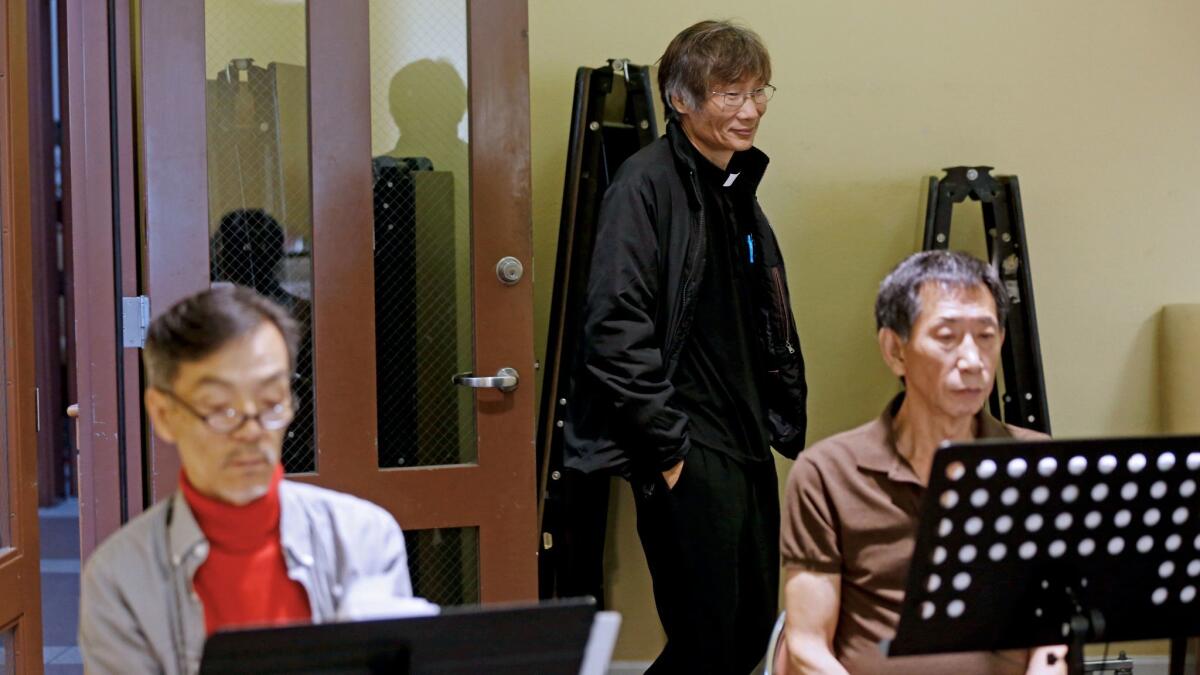
The priest asked acquaintances for small donations, and began offering help. A few months later, he rented a shuttered acupuncture clinic on the outskirts of Koreatown. Since then, the “Joy Giver” shelter as the priest calls it, has relocated twice, last year to a house near the 10 Freeway.
His guests have included married couples, a U.S. army veteran, abused women, alcoholics, gambling addicts and one octogenarian with dementia.
Most had come to the United States on student or tourist visas that had long since expired.
In Koreatown, “we’re hustling amongst ourselves, we’re competing with one another,” the priest said. “Each person’s story is a novel. It’s 80 novels that have passed through here.”
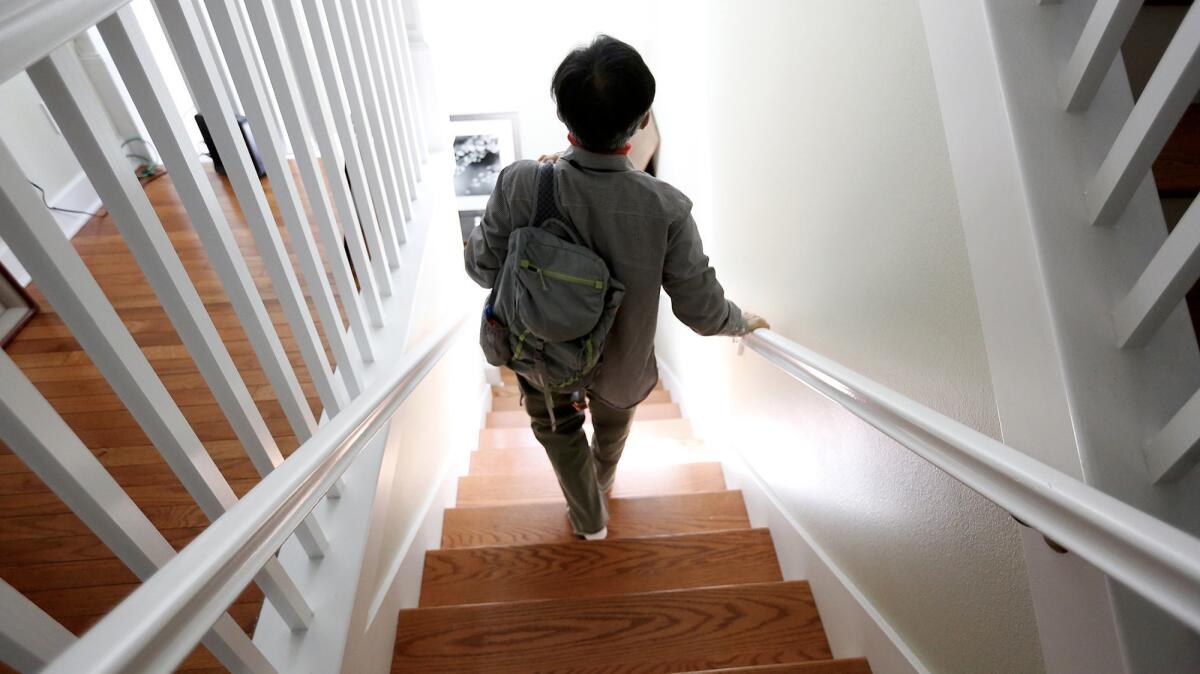
Hitting bottom at a K-town sauna
Seon Jin Kim didn’t admit to himself that he needed help until he hit bottom a couple of years ago.
That bottom was the cold floor of a Koreatown sauna, where he’d been spending nights for a $15 entrance fee. One night after two months of no insulin shots, he collapsed. He woke up in a hospital three days later.
More than a decade ago, he’d fled financial troubles in South Korea to start anew in Los Angeles, arriving as a tourist and then overstaying his visa. Since then, Kim had taken whatever job he could, chasing construction work in Orange County, San Jose, Las Vegas and Utah.
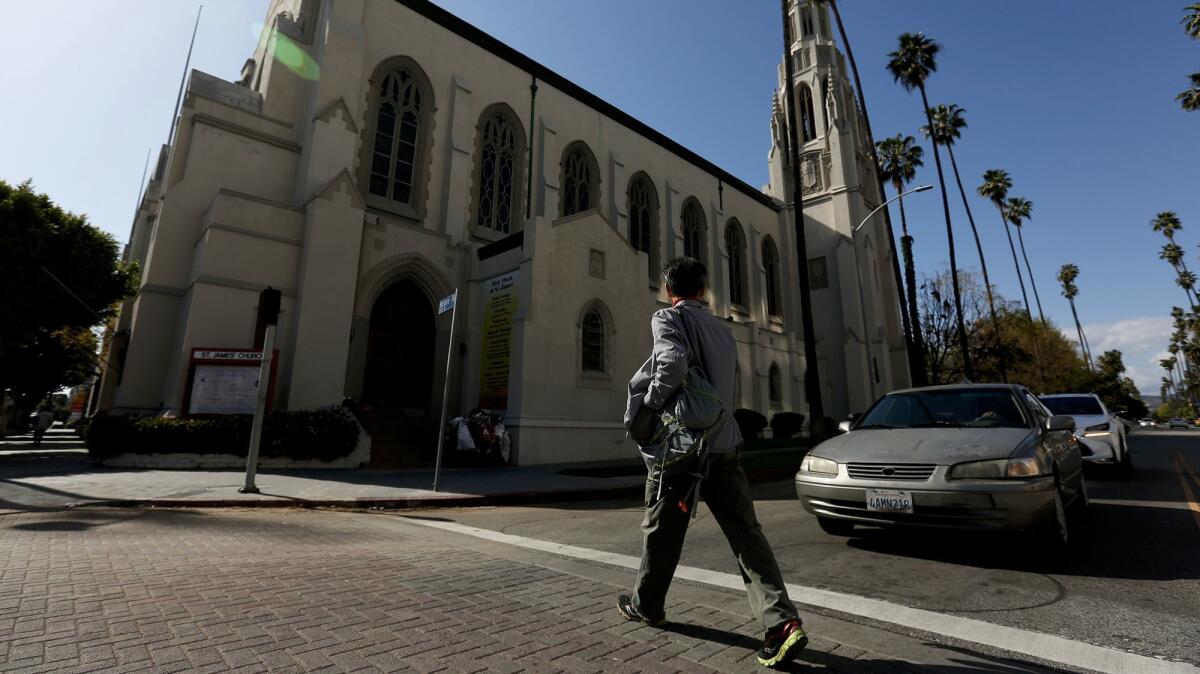
Broke and back in L.A., he heard about Adullam from an itinerant Korean man he met riding the bus.
The day after he awoke in the hospital, wearing nothing but his underpants, he went to see the priest, asking for help.
At Adullam, he’s learned the residents’ unspoken code: You don’t ask anyone how they ended up there. You don’t ask about children or marriages.
“You maybe learn what cigarettes they smoke,” he said.
So he has never traded life stories with Soon Choi, 65, who lives in one of several makeshift living quarters partitioned by bookcases.
Choi came to the United States in 1996 after a failed business venture in South Korea, in part because he thought the United States would be better for his daughter, who was disabled with brain damage.
His first job was driving a Koreatown bandit taxi from 6 a.m. to midnight.
Living paycheck to paycheck took a toll on his marriage and he and his wife parted ways. When his vision deteriorated, he became a dispatcher. Then, his glaucoma made that impossible too.
After a few missed rent checks, his landlord evicted him. Weeks on the street became months and then years.
Choi has a son who is deployed overseas with the U.S. military, but says he couldn’t possibly tell him that his father has nowhere to live.
Not far from Soon Choi’s quarters, Yong Choi, 64, sleeps in another nook with three other residents.
He has worked as a tour guide, a security guard and a taxi driver, and has sold imported shirts, perfumes, dress shoes and belts.
He too has a son, somewhere, with whom he has lost touch. He wonders about him sometimes, he says, when he awakes in the middle of the night and lies still, so as to not disturb those sleeping nearby.
Refuge, in a garden and songs
The shelter these days is a tan-colored clapboard home with a yard — a big step up from the acupuncture clinic.
The Rev. Kim pleads with acquaintances, friends and members of his congregation to get the residents jobs at Koreatown supermarkets, liquor stores and restaurants.
He tries to keep those who don’t find work busy.
Pasted on a kitchen cabinet is a schedule of the person responsible for cleaning up each day of the week. The yard is filled with potted plants blooming with flowers of all colors that the priest encourages residents to rearrange.
On Saturdays, he brings a half-dozen of the shelter residents to St. James, where they join congregants in choir rehearsals.
None of them can read music and some just mouth the words.
But he can see it gives them pride, the priest says. And it gently reminds his regular Koreatown congregation of the invisible neighbors in their midst.
Twitter: @vicjkim
More to Read
Sign up for Essential California
The most important California stories and recommendations in your inbox every morning.
You may occasionally receive promotional content from the Los Angeles Times.










